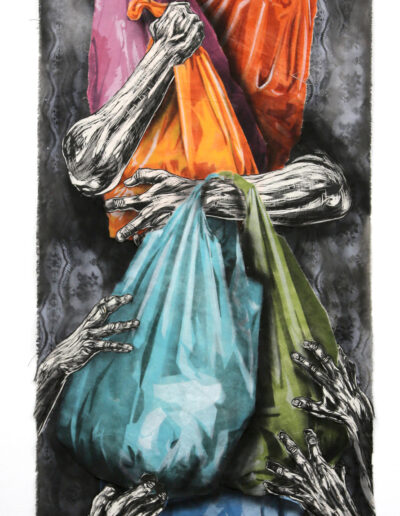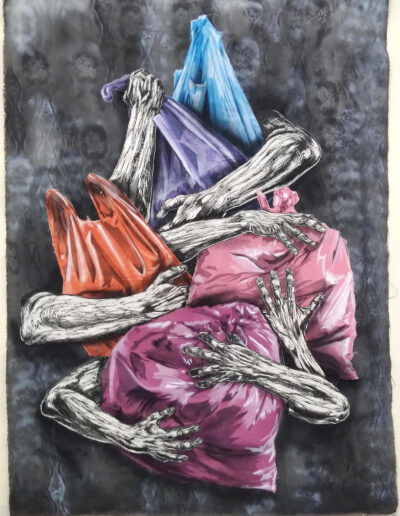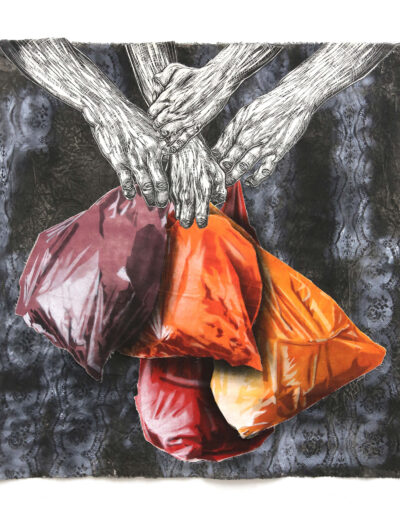Interview
Carlos Llobet: Into the Wild
“Into the Wild” is a regular interview with early career print artists. Interviews will highlight the varied paths the subjects are taking to strike an accord between life and their artistic practice. Expect a balance of approaches, from those hopping the residency circuit, to those teaching part-time or who snagged the elusive tenure-track gig right out of the gate, or those working a desk job or waiting tables to afford access to a community print shop or maker space. In short, there’s many ways to “make it” and we want to share them all!
Have an idea for a person to interview? Please submit suggestions to the Interviews section of the Submissions portal below.
Carlos Llobet, MFA
Carlos Llobet Montealegre is a Costa Rican printmaker who explores social and economic inequality, individual well-being, and the intersection of art and society. He earned his MFA from State University of New York at Buffalo in 2019. In 2020 he received a Fellowship in Printmaking/Drawing/Art Book from the New York Foundation of the Arts. He has attended residencies at the Kala Institute in Berkeley 2019/20, and Temporal in San Jose, Costa Rica 2022/23. He continues to teach middle school art at Lincoln International School in Costa Rica, balancing teaching with his studio practice.
The colonial history of Latin America and his experience in a gentrifying area as a child act as a forebear of the expanding divide between rich and poor which informs his themes. The working class of Costa Rica populate his work, a group exploited by politicians and isolated by the media’s celebration of wealth and fame. These protagonists are portrayed in prints and printstallation that incorporates collage, painting, and weaving of prints to expand the limits of printmaking beyond the frame and the gallery.
His recent series “Lo que cargamos” (What we carry), explores the psychosomatic effects of stress and the physical manifestation of emotions within the body. The monoprints utilize plastic bags as symbolic objects to convey the emotional weight felt during the pandemic. Through this exploration of the body and its relation to stress, he examines the impact of external societal factors on individual well-being, drawing attention to the importance of mental health awareness and support during times of crisis.
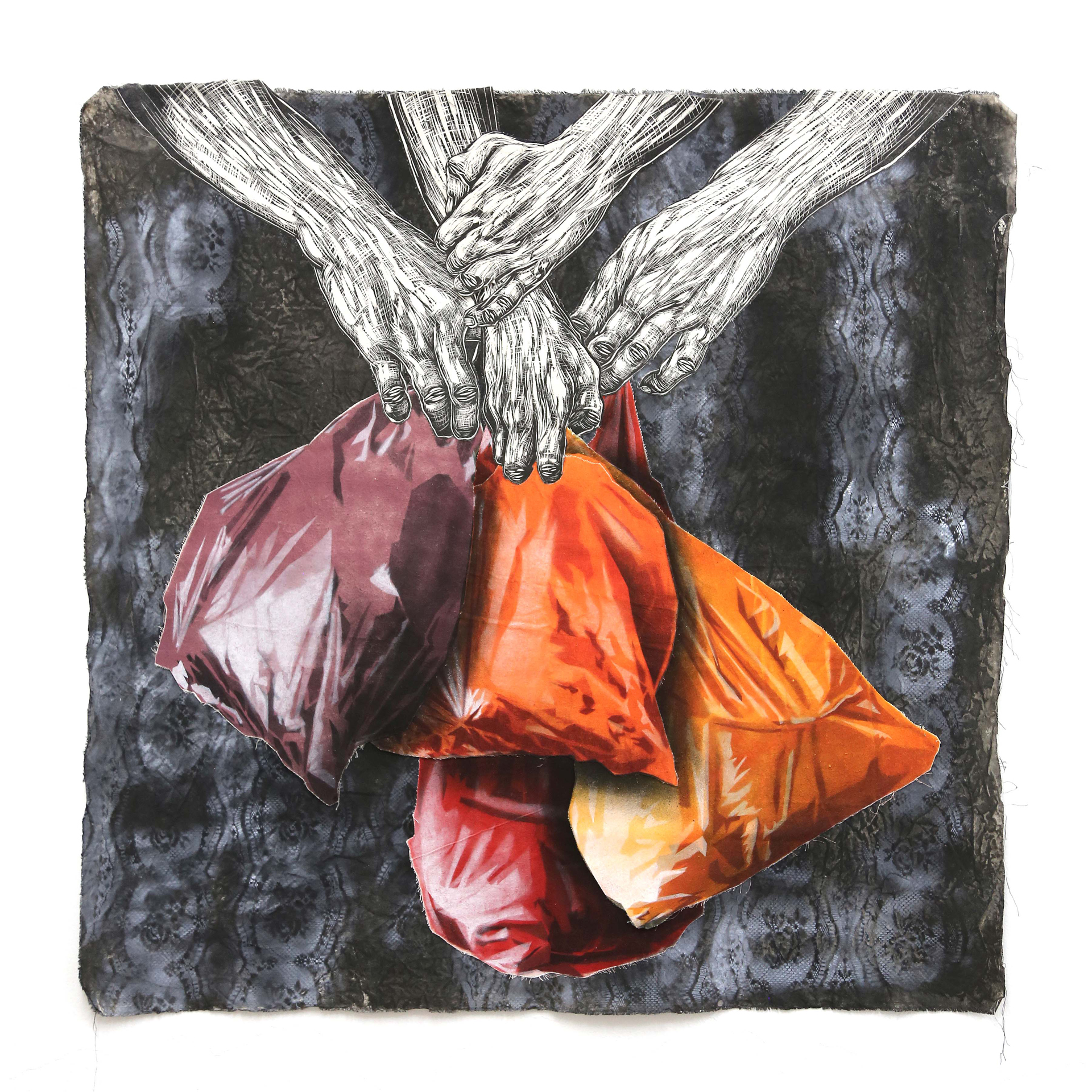
Lo que todos cargamos
2021
The Interview
Blake Sanders: You graduated from State University of New York at Buffalo in 2019. You’re now back in Costa Rica. How did you choose Buffalo and how did your time there affect your work and your perspective as you returned home?
Carlos Llobet: I decided on Buffalo primarily because two of my professors during my BFA at the University of Costa Rica had connections to the University at Buffalo and Buffalo State. At first, I only knew a little about the city, so I researched both programs. Figuring out the financial aspect also took some time. Eventually, I settled on applying to UB due to its strong program. They sweetened the deal with a full scholarship and stipend.
In my research of the city, I learned about its history and how it has been affected economically. This information aligned perfectly with the themes I work with in my prints. When I got there, they greeted me with open arms. Buffalo’s art community is tight-knit, with organizations like The Buffalo Art Center, The Western New York Book Center, and Mirabo Press championing local artists. Interestingly, they’re all open to newcomers, especially art students trying to find their groove.
My time in Buffalo was honestly fantastic. The University at Buffalo had my back all the way. The faculty went above and beyond in helping me refine my artistic vision conceptually. Jeff Sherven, the print tech at UB, is seriously one of the most amazing and supportive people I’ve ever met. He guided me to texts, artists, philosophy resources, articles – you name it. Not only did this help during my time in Buffalo, but the facilities also impressed me. The print shop was an artist’s dream playground, fully stocked. I had free rein to experiment with various techniques and make the space work for me. I put in much effort, honing my existing skills and picking up some impressive new ones.
Despite all these advantages, my artistic approach didn’t undergo a massive overhaul—just a couple of adjustments. I played around with print sizes and got creative with my support materials. Since I knew I’d eventually head back to Costa Rica, I wanted my artistic process to be adaptable, not reliant on high-end presses or a top-notch print setup. That’s when I delved into large-format relief prints and started working with fabric as a canvas instead of paper.
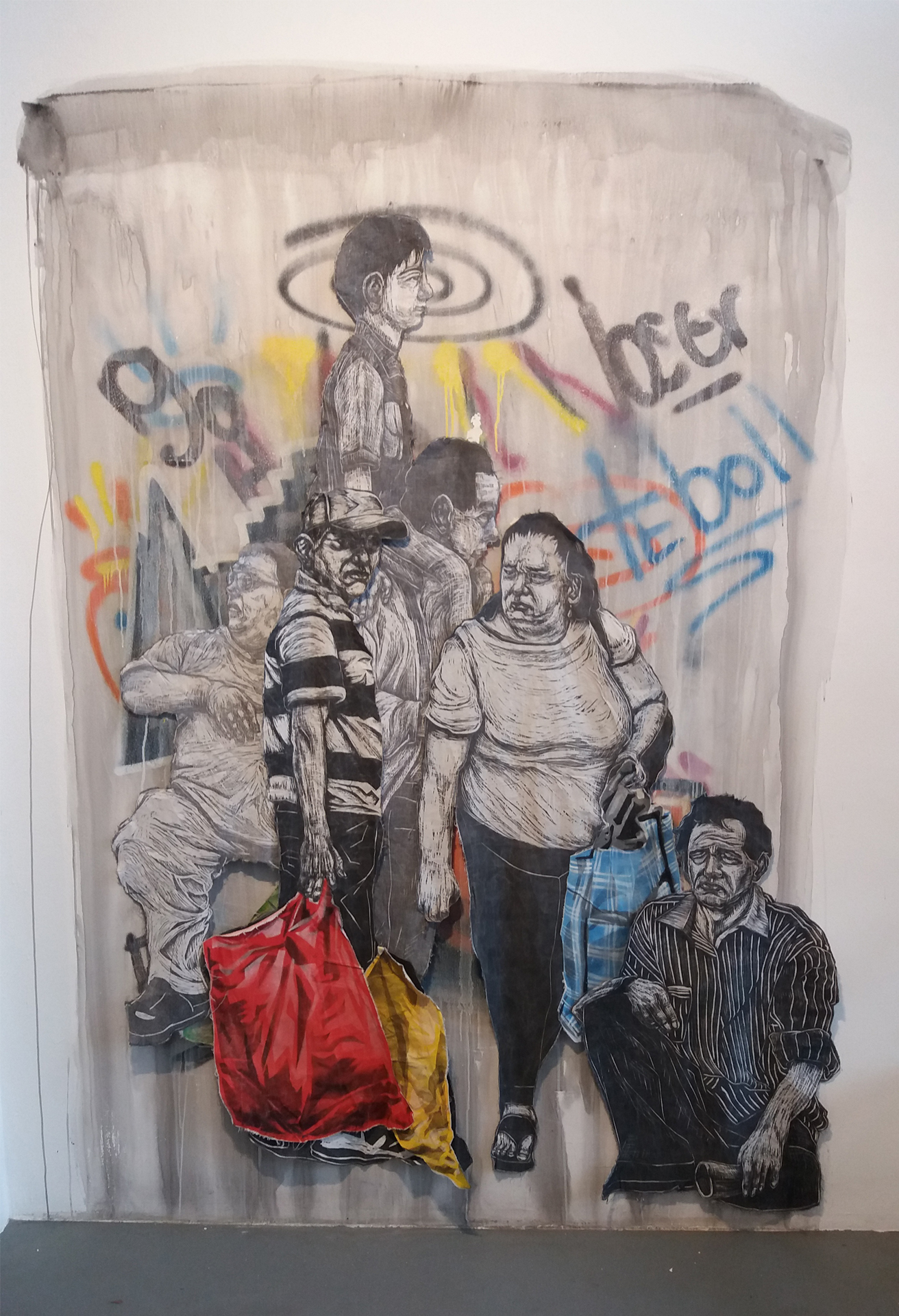
Urban Composition
2019
B: You’re now a middle school art teacher in San José. Was becoming an educator your goal? How does your experience as a professional artist inform your teaching, and vice versa?
CL: Before venturing into teaching and grad school, I devoted 14 years to commercial screen printing. I managed everything from design to color separation and printing in that role. Given the inherent turnover in this field, I became proficient in training new designers regularly. Ironically, my training efforts often led these individuals to pursue better opportunities at other print shops within a mere six months. This pattern resulted in new hires earning higher salaries than mine, a strategy to incentivize retention. Eventually, this situation prompted my decision to move on from that role.
My initial experience as an educator was in a school setting, where I assumed the role of the sole art teacher. I catered to students ranging from first to twelfth grade, which was undeniably demanding. Yet, witnessing the creative expression of children and adolescents through mediums such as paint, print, and sculpture was immensely gratifying. After dedicating a year to this endeavor, I embarked on my MFA journey in Buffalo.
My pursuit of an MFA was driven by something other than a desire to secure a university-level teaching position. At the time, it represented an opportunity to explore uncharted terrain and assess my ability to thrive within a competitive art environment. My two-year stint in Buffalo was nothing short of transformative. The teaching experience at UB broadened my perspective significantly. The students responded positively to my teaching methods, showing enthusiasm for my classes. Following graduation, I extended my visa through the OPT program, which allowed me to teach across various colleges in Buffalo. However, the outbreak of Covid-19 necessitated my return home, where I was fortunate to secure my current position amidst the challenges of the pandemic.
My primary identity remains that of an artist, with my role as an educator coming in second. This distinction significantly informs my teaching approach, which centers around the creative process. I initiate instruction by laying out foundational terms, supplemented by exercises and historical context. Subsequently, I empower my students to apply this knowledge to their creative pursuits. While I offer minimal directives to ensure their creative autonomy, I facilitate discussions to refine their ideas and troubleshoot any hurdles. I actively advocate for embracing failure, emphasizing its value as a catalyst for growth. Drawing from personal experience, I’ve recognized that failures often impart more profound lessons than successes, and I’ve certainly encountered my fair share.
Becoming an educator felt like a natural evolution for me. It wasn’t a calculated decision but an outcome of my genuine passion and accumulated experience. If you possess knowledge, sharing it is beneficial and a responsibility. The act of withholding knowledge is contrary to the fundamental purpose of education and comes across as self-serving.
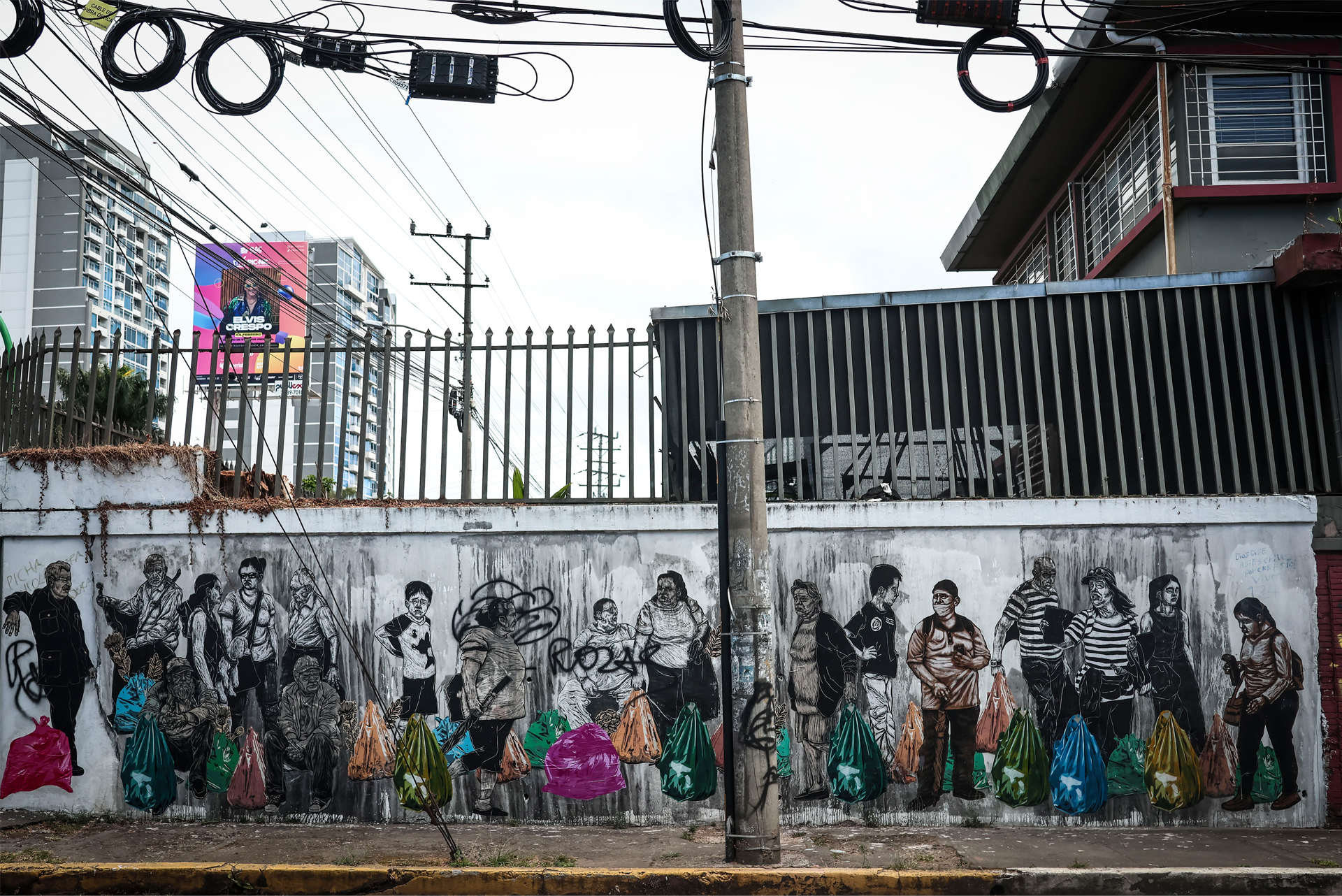
Urban Composition
2023
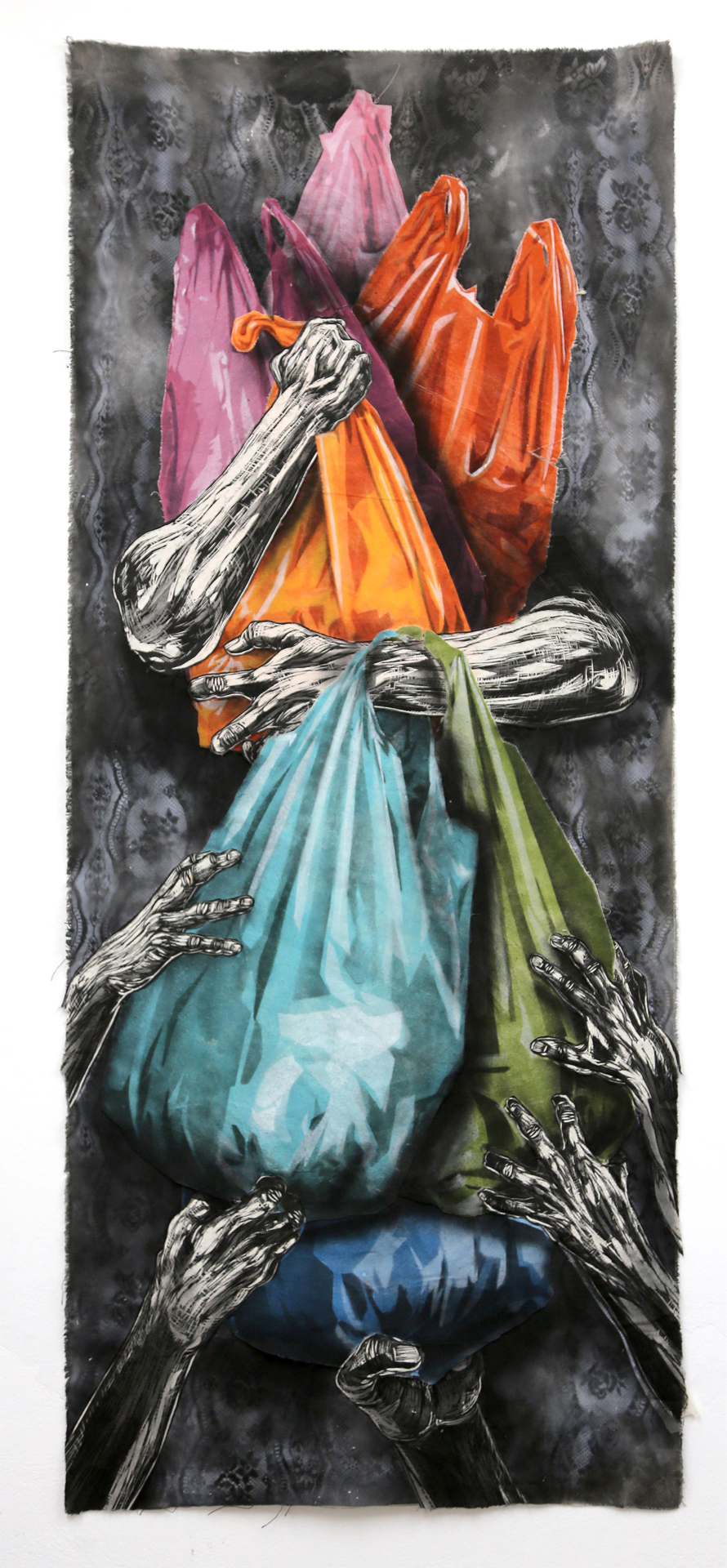
Lo que aguantamos
2022
Modular Monoprinting
I hand print everything because of the scale. No presses in Costa Rica can handle the size. I print on paper (newsprint, craft, and butcher) for outdoor wheat pasting around the city and on fabric for indoor installation work…
Once [the printing] is done, the fun begins for me. With all the prints completed, I can start working on compositions, narratives, and interactions with the images.
B: Your work includes installation and non-traditional print formats. How has this philosophy of expanded print made your creative process more flexible regarding location and equipment requirements? How has making your artwork changed since you left school?
CL: My current focus in printmaking involves exploring reproductions of images intrinsic to print media. I use these multiple images to create unique artworks and installations. These ideas were influenced by several artists, like Sila Chanto, a printmaker from Costa Rica who worked on large-scale print installations; Velkis Ramirez, a Dominican artist who created large-scale prints and used the matrices as part of her installations; and Kathe Kollwitz, who has been an essential reference in my work due to her solid themes and aesthetic.
I have rented a studio in an artist-led space called “Temporal” for the last two years. It was easy to balance with work as it was close to my home. I would work a couple of hours during weekdays and over the weekends. There are no community shops in Costa Rica where people can print and work; presses are hard to come by, and only academic institutions can afford them.
As mentioned before, I hand print everything because of the scale. No presses in Costa Rica can handle the size. I print on paper (newsprint, craft, and butcher) for outdoor wheat pasting around the city and on fabric for indoor installation work. The printing process is very taxing on my body as I have to carve and print on the floor, applying enough pressure to achieve good prints.
Working this way has completely changed how I approach printmaking. It’s a monoprint on fabric sewn onto canvas. It is a very open-ended working method, requiring extra planning steps from sketching to carving, printing, and cutting the prints. It takes many weeks and months of preparation before creating the final work and seeing results. Once it is done, the fun begins for me. With all the prints completed, I can start working on compositions, narratives, and interactions with the images. My methods have not changed since I left school; I’ve become more efficient in carving and printing, trying to maintain the same aesthetic in each series.
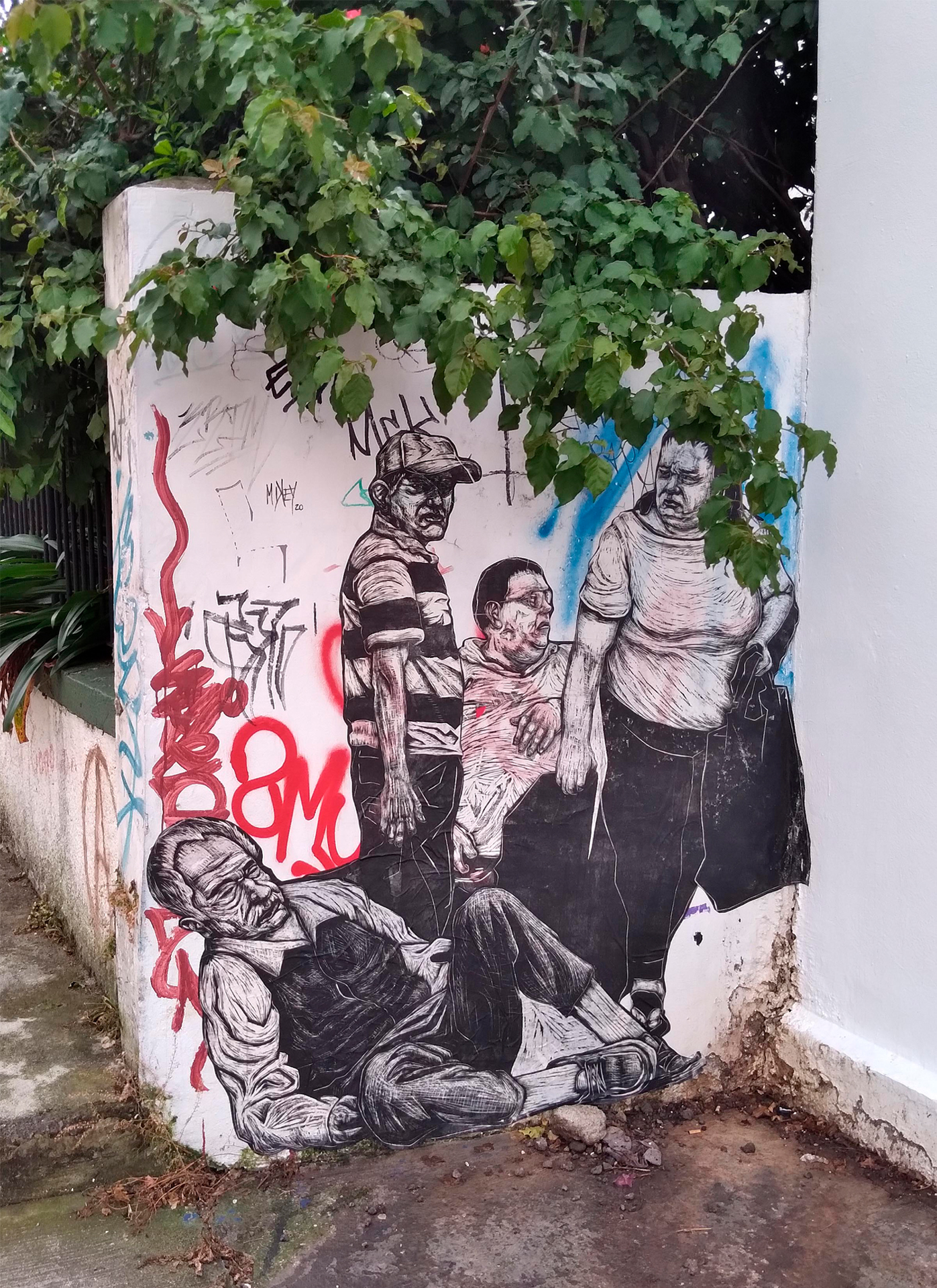
Urban Composition
2020
B: You earned a Fellowship from the New York Foundation for the Arts and have participated in some prestigious residencies. How have these distinctions and experiences benefited your work? How has the application process and residency experience changed to accommodate your teaching career?
CL: Balancing an artistic career and teaching has been challenging. I was fortunate to have been selected as a fellow in printmaking with NYSCA/NYFA. I’m proud of it, and it helped me restart my art practice in Costa Rica. Residencies have provided outstanding experiences; talking to artists and curators has made me more eloquent and reassured about my work. I’ve participated in very few residences in the US and several here in Costa Rica. Due to Covid, I couldn’t obtain my VISA until recently. I took full advantage of visiting friends in Buffalo and doing a two-month residency with the New York Latin American Art Triennial in May/June.
As a schoolteacher, it isn’t easy to schedule residencies abroad, even though I get a month off in the summer, and at the end of the year, they seldom align. I was able to attend this last residency thanks to the school where I work and their belief in my work and responsibility. Still, it’s something that will only happen occasionally. Now I look for shorter residencies, month-long ones that coincide with my school breaks.
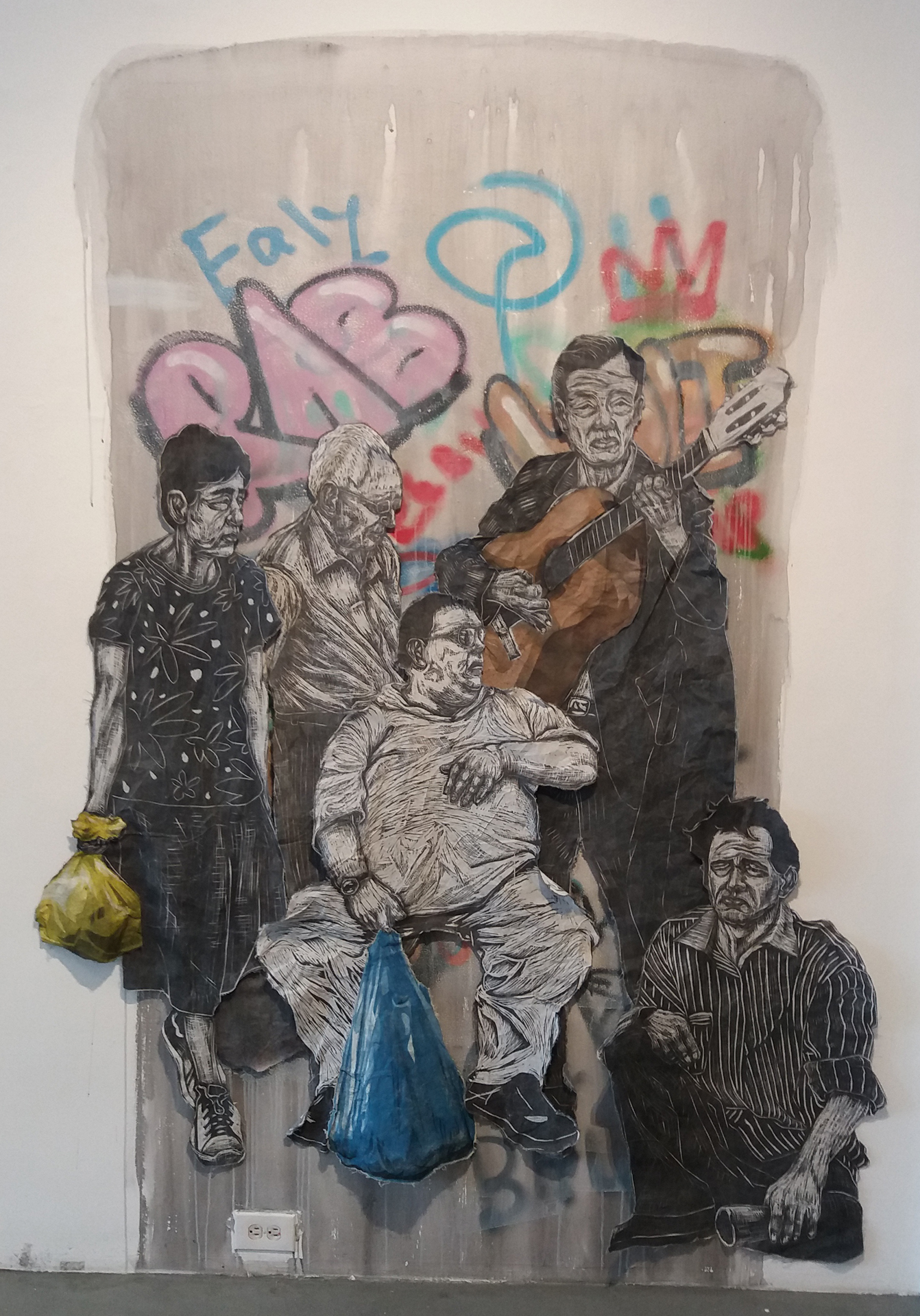
Urban Composition
2019
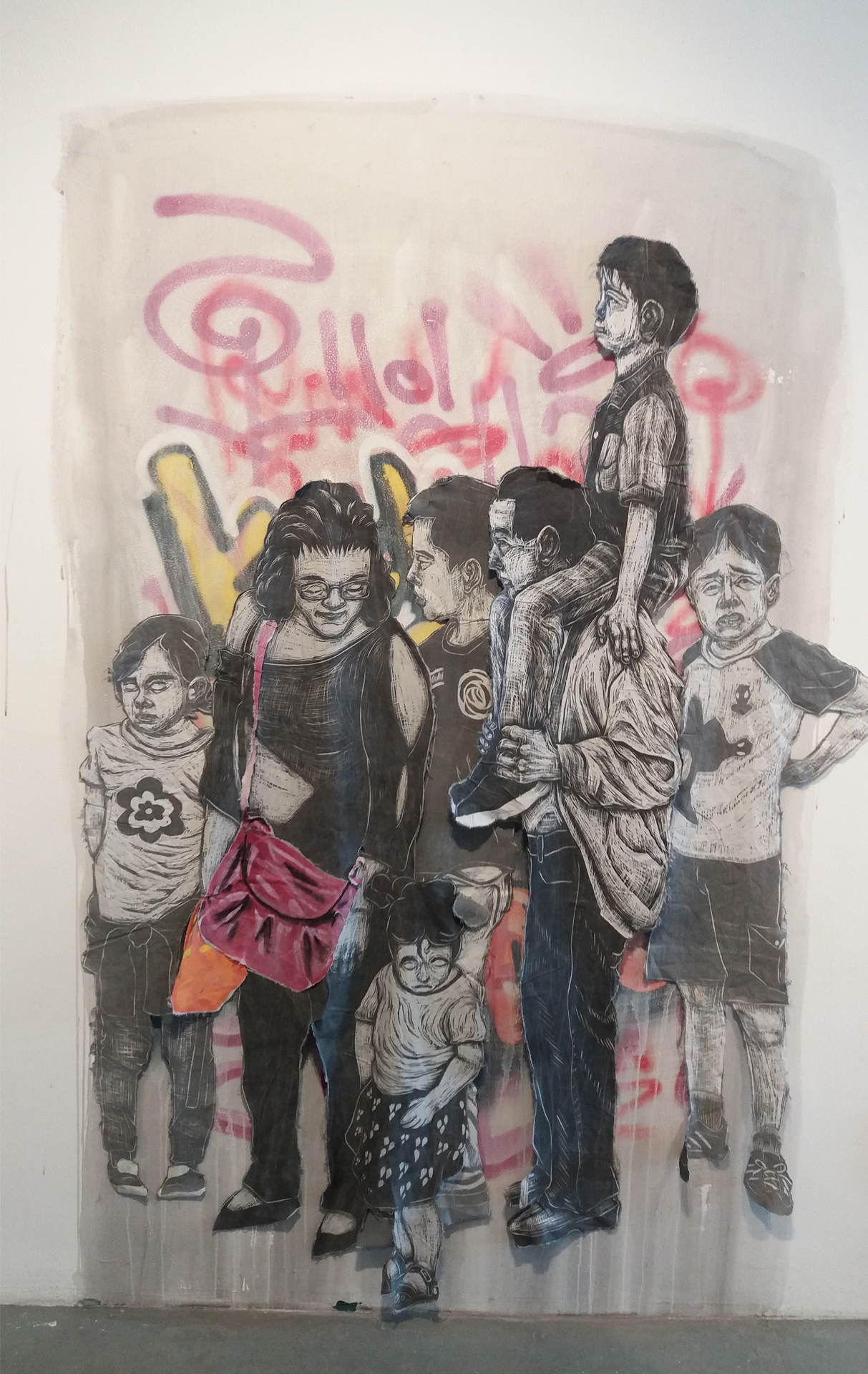
Urban Composition
2019
B: What are your goals for the next couple years? How have your goals/priorities changed since being out of school?
CL: In my art career, my plan for the near future is first to complete the series that I’ve been working on for the past five years. I want to create up to fifty life-size figures, of which I currently have forty-two. I may do a couple more residencies abroad and finish it. I also want to organize a big solo show to display the installation. Finding a place willing to exhibit it has been a challenge, but I remain hopeful.
Regarding my teaching career, I still want to continue, but I’ll get the chance to teach printmaking as well because I have so much to offer. Additionally, some friends and I are exploring the possibility and viability of opening a print shop here in Costa Rica. Currently, there are no communal print spaces where artists can use equipment or connect with other printmakers.
B: What advice would you give current students as they’re about to journey into the wild? What do you wish you’d been told or prepared for?
CL: I want to advise you always to maintain focus, even if you are working in a different area than the one you studied. Try to continue making art in any form, whether printing, painting, sculpture, or anything else. From my experience, I know it is challenging to sustain your art practice in these difficult times. Another advice is to join groups, art collectives, or art organizations with friends. Having a support group and working towards a common goal is always beneficial. There is strength in numbers.
Lastly, if you plan on pursuing an MFA, try not to do it right after your BFA. Live a little, get a job, develop your interests, and keep making art. I understand there is pressure to obtain as many degrees as possible, but you can appreciate it more if you are more mature. If you attend a large university for your degree, take advantage of the other schools to expand your knowledge. Don’t just stick to the art department; cool people might be doing extraordinary things that can complement your art practice.

